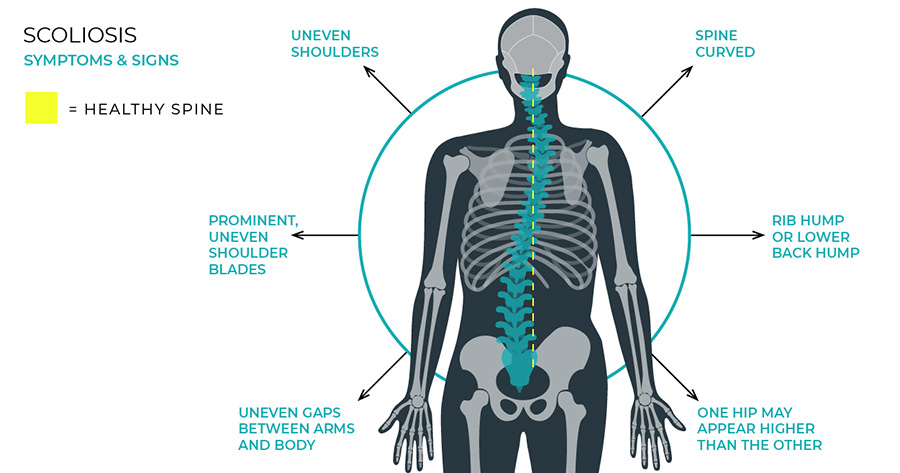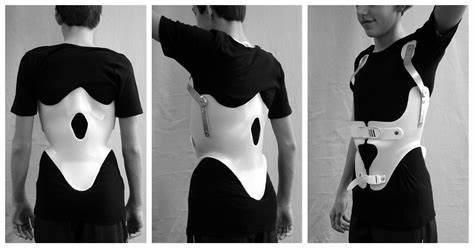Scoliosis is a condition characterized by an abnormal curvature of the spine, which can cause pain, discomfort, and even affect a person’s overall quality of life. Fortunately, there are various treatment options available, one of which is the TLSO scoliosis brace. This article aims to provide a comprehensive guide to choosing and using a TLSO brace for optimal scoliosis support and correction.

Understanding Scoliosis and its Treatment Options
Before delving into the specifics of a TLSO brace, it is essential to understand scoliosis and the available treatment options. Scoliosis is a condition that affects the alignment of the spine, causing it to curve sideways. It can occur in both children and adults, with varying degrees of severity.
Treatment options for scoliosis range from observation and physical therapy to surgical intervention. The choice of treatment depends on factors such as the severity of the curvature, the age of the patient, and the potential for further progression. In cases where the curvature is moderate and still progressing, a TLSO brace may be recommended.
What is a TLSO Scoliosis Brace?
A TLSO brace, short for Thoracolumbosacral Orthosis, is a type of brace specifically designed to support and correct the curvature of the spine in scoliosis patients. It is a rigid brace that extends from the thoracic region of the spine to the sacrum, providing stability and preventing further progression of the curvature.
The TLSO brace is custom-made for each individual, ensuring a proper fit and maximum effectiveness. It is typically made of lightweight and durable materials such as plastic or fiberglass, allowing for comfortable wear throughout the day.

Benefits of Using a TLSO Brace for Scoliosis
Using a TLSO brace offers several benefits for scoliosis patients. Firstly, it helps to halt the progression of the curvature, preventing it from worsening over time. This is particularly important in growing children and adolescents, as it can help avoid the need for surgical intervention.
Additionally, a TLSO brace provides support and stability to the spine, reducing pain and discomfort associated with scoliosis. It can also improve posture and body alignment, enhancing overall body mechanics and reducing strain on other parts of the body.

Types of TLSO Braces Available
There are several types of TLSO braces available, each designed to address specific types and severities of scoliosis. The most common types include the Boston brace, the Wilmington brace, and the Charleston bending brace.
The Boston brace is the most widely used TLSO brace and is suitable for treating various types of scoliosis. It consists of a plastic shell that wraps around the torso, applying corrective pressure to the curved areas of the spine.
The Wilmington brace is a custom-made TLSO brace that is typically used for patients with a more severe curvature. It is made of a lightweight material and is designed to be worn under clothing, providing discreet support and correction.
The Charleston bending brace is a unique type of TLSO brace that is worn only at night. It is designed to apply corrective pressure to the spine while the patient is lying down, taking advantage of the body’s natural flexibility during sleep.
Factors to Consider When Choosing a TLSO Brace
When choosing a TLSO brace, several factors should be taken into consideration. Firstly, the severity and type of scoliosis should be assessed to determine the most appropriate brace. Consulting with a healthcare professional, such as an orthopedic specialist or a certified orthotist, is crucial in making an informed decision.
The patient’s lifestyle and daily activities should also be considered. For example, if the patient participates in sports or other physical activities, a brace that allows for freedom of movement may be preferred. On the other hand, if the patient has a sedentary lifestyle, a more rigid brace may be suitable.
The patient’s age is another important factor to consider. Growing children and adolescents may require a brace that allows for growth and adjustment, while adults may benefit from a more rigid and supportive brace.
Getting Fitted for a TLSO Brace
Once a decision has been made regarding the type of TLSO brace, the next step is to get fitted for the brace. This process involves taking precise measurements and creating a custom mold of the patient’s torso. This ensures that the brace fits snugly and provides optimal support and correction.
The fitting process is typically done by a certified orthotist, who specializes in designing and fitting orthopedic braces. They will guide the patient through the process, ensuring that all necessary measurements are taken accurately.
Proper Usage and Maintenance of a TLSO Brace
Using a TLSO brace correctly is crucial for optimal support and correction. The brace should be worn as instructed by the healthcare professional, typically for a specified number of hours each day. Compliance with the recommended wearing schedule is essential for achieving the desired results.
Proper maintenance of the TLSO brace is also important. It should be cleaned regularly using mild soap and water, ensuring that it is free from dirt and sweat. The brace should be inspected for any signs of wear and tear, and any damaged parts should be repaired or replaced promptly.
Adjusting to Wearing a TLSO Brace
Wearing a TLSO brace can be an adjustment, both physically and emotionally. It may take some time for the patient to get used to the feeling of wearing a brace and the restrictions it may impose on their daily activities.
It is important to provide support and encouragement to the patient during this adjustment period. Engaging in open and honest communication about any concerns or discomfort can help alleviate any anxiety or frustration.
Monitoring Progress and Making Adjustments
Regular monitoring of the patient’s progress is essential when using a TLSO brace. This typically involves periodic visits to the healthcare professional to assess the effectiveness of the brace and make any necessary adjustments.
During these visits, X-rays may be taken to evaluate the progression of the curvature and determine if any modifications to the brace are required. The healthcare professional will also assess the patient’s comfort level and address any concerns or issues that may arise.
Potential Side Effects and How to Manage Them
While a TLSO brace is generally safe and well-tolerated, there may be some potential side effects. These can include skin irritation, muscle weakness, and difficulty breathing. If any of these side effects occur, it is important to consult with the healthcare professional immediately.
To manage skin irritation, it is recommended to wear a thin, breathable undershirt under the brace and to regularly clean and moisturize the skin. Muscle weakness can be addressed through physical therapy exercises that target the affected muscles. If difficulty breathing occurs, the brace may need to be adjusted to provide more comfort and freedom of movement.
Conclusion: Optimizing Scoliosis Support and Correction with a TLSO Brace
In conclusion, a TLSO brace can be an effective treatment option for scoliosis, providing support and correction to the spine. By understanding the basics of scoliosis, the benefits of using a TLSO brace, and the factors to consider when choosing and using one, patients can optimize their scoliosis support and correction.
It is important to work closely with healthcare professionals throughout the process, from choosing the right brace to monitoring progress and making adjustments. With proper usage, maintenance, and adjustment, a TLSO brace can significantly improve the quality of life for individuals with scoliosis, allowing them to lead active and fulfilling lives.
Referencias
- National Scoliosis Foundation. “TLSO Bracing for Scoliosis.” National Scoliosis Foundation. Available at: https://www.scoliosis.org/treatment/tlso-bracing/
- Cleveland Clinic. “Scoliosis Brace: How It Works and What to Expect.” Cleveland Clinic. Available at: https://my.clevelandclinic.org/health/treatments/21818-scoliosis-bracing
- Mayo Clinic. “Scoliosis Diagnosis and Treatment.” Mayo Clinic. Available at: https://www.mayoclinic.org/diseases-conditions/scoliosis/diagnosis-treatment/drc-20350967
- American Academy of Orthopaedic Surgeons. “Scoliosis: Bracing and Surgery.” AAOS. Available at: https://orthoinfo.aaos.org/en/diseases–conditions/scoliosis/
- Johns Hopkins Medicine. “What is a TLSO Brace?” Johns Hopkins Medicine. Available at: https://www.hopkinsmedicine.org/health/conditions-and-diseases/scoliosis/tlso-brace
- Spine-Health. “TLSO Bracing for Scoliosis.” Spine-Health. Available at: https://www.spine-health.com/conditions/scoliosis/tlso-bracing-scoliosis
- The Scoliosis Association. “Understanding TLSO Braces.” The Scoliosis Association. Available at: https://www.scoliosis-association.org/tlso-brace-guide/
- OrthoInfo. “Spinal Bracing for Scoliosis.” OrthoInfo. Available at: https://orthoinfo.aaos.org/en/treatment/spinal-bracing-for-scoliosis/
- Healthline. “How a TLSO Brace Helps with Scoliosis.” Healthline. Available at: https://www.healthline.com/health/tlso-brace
- PubMed Central. “Effectiveness of TLSO Bracing in Scoliosis Treatment.” PubMed Central. Available at: https://www.ncbi.nlm.nih.gov/pmc/articles/PMC/
- Children’s Hospital of Philadelphia. “TLSO Bracing for Scoliosis: What Parents Need to Know.” CHOP. Available at: https://www.chop.edu/conditions-diseases/scoliosis/tlso-bracing
- National Institutes of Health. “Scoliosis Bracing: Overview and Best Practices.” NIH. Available at: https://www.nih.gov/scoliosis-bracing
- Spine Universe. “TLSO Bracing: Options and Benefits for Scoliosis.” Spine Universe. Available at: https://www.spineuniverse.com/conditions/scoliosis/tlso-bracing
- Harvard Health Publishing. “Bracing for Scoliosis: What You Should Know.” Harvard Health Publishing. Available at: https://www.health.harvard.edu/bracing-for-scoliosis
- Scoliosis Research Society. “TLSO Bracing and Its Role in Scoliosis Management.” Scoliosis Research Society. Available at: https://www.srs.org/professionals/education/tlso-bracing

